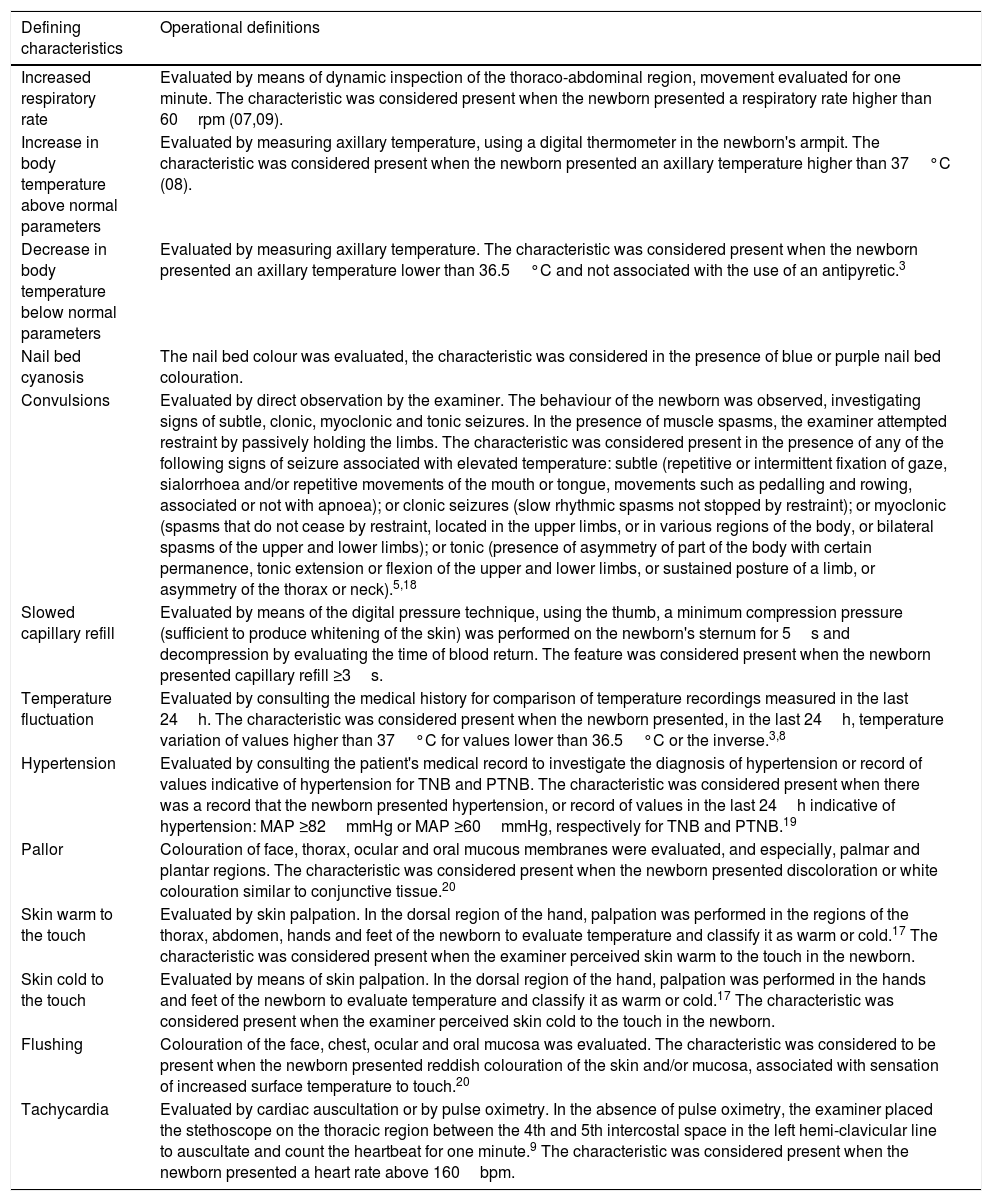To identify the measures of accuracy for defining characteristics of the nursing diagnosis: Ineffective thermoregulation in newborns.
MethodDiagnostic accuracy study with cross-sectional design performed in medium and high-risk maternity units, located in Fortaleza city/Brazil. A total of 216 newborns were evaluated to identify the defining characteristics of the diagnosis under study. The measures of accuracy for defining characteristics were obtained from a latent class model with random effects for the calculation of sensitivity and specificity values.
ResultsThe characteristics of increased respiratory rate and warm skin to the touch had higher sensitivity values (99.9%) and lower specificity (79 and 75%) and the characteristics of body temperature fluctuations above and below the normal parameters and hypertension had the highest specificity (80.4 and 100%, respectively).
ConclusionThe characteristic fluctuation of the body temperature above and below the normal parameters may be better to confirm the diagnosis, having presented a higher specificity value.
Identificar las medidas de precisión de las características definitorias del diagnóstico de enfermería termorregulación ineficaz en los recién nacidos.
MétodoEstudio de precisión diagnóstica de diseño transversal realizado en unidades de maternidad de medio y alto riesgo, localizada en la ciudad de Fortaleza-CE. Se evaluaron 216 recién nacidos para la identificación de las características definitorias del diagnóstico en estudio. Las medidas de precisión de las características definitorias se obtuvieron a partir de un modelo de 2 clases latentes con efectos aleatorios para el cálculo de los valores de sensibilidad y especificidad.
ResultadosLas características de frecuencia respiratoria aumentada y piel caliente al tacto presentaron valores de sensibilidad más altos (99,9%) y de especificidades menores (79 y 75%) y las características fluctuaciones de la temperatura corporal por encima y por debajo de los parámetros normales e hipertensión fueron las de mayor especificidad (80,4%) y sensibilidad (100%), respectivamente.
ConclusiónLa característica fluctuación de la temperatura corporal por encima y por debajo de los parámetros normales puede ser más adecuadas para confirmar la presencia del diagnóstico, por haber presentado un mayor valour de especificidad.











